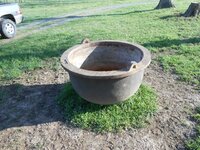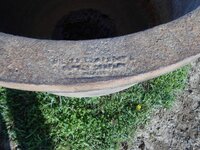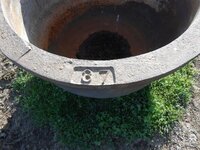VOL1266-X
Gold Member
- Jan 10, 2007
- 5,589
- 2,910
- Detector(s) used
- Fisher 1266-X, F75 X 2
- Primary Interest:
- Relic Hunting
A friend found this in an old barn and had a backhoe bring it home. Looks foundry related. Any ideas? I couldn't read the cast in maker's mark. Thanks.








 Breezie
Breezie


